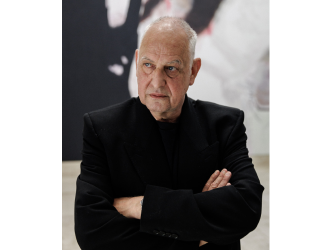Feeling of ecstasy
Among the lush and extraordinary offerings from exhibitions this October in Paris, there is one place that could easily be overlooked yet which, through the sight of a single painting, produces a feeling of ecstasy. It can be found right in the middle of room 700 in the Denon wing of the Louvre museum, on level 1, that has regained its status as one of the wonders of the institution after 10 months of restoration: “La Mort de Sardanapale” (The Death of Sardanapalus), painted by the illustrious Eugène Delacroix in 1827. I can already hear you say, “ha, well of course we know this painting”. Wrong!
8 layers of varnish
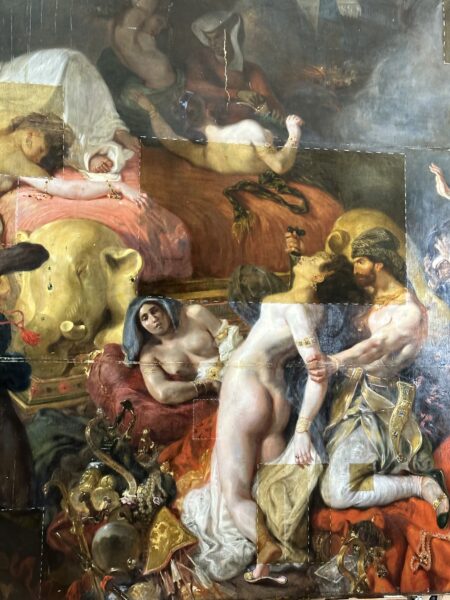
Eugène Delacroix( detail)
For decades this painting, composed of explosions of flesh, was weighed down by eight layers of varnish which had created an unsavoury brownish sheen. And so it returns, straight from the early 19th century and spread across the almost 5 metre canvas, complete with Delacroix’s magic touch, the gleaming eyes of his beautiful slaves, the taut muscles of his eunuchs, his horses rearing up, his shimmering fabrics, and everywhere, absolutely everywhere, the gold and precious stones that adorn the bodies awaiting sacrifice.
Forgotten monarch
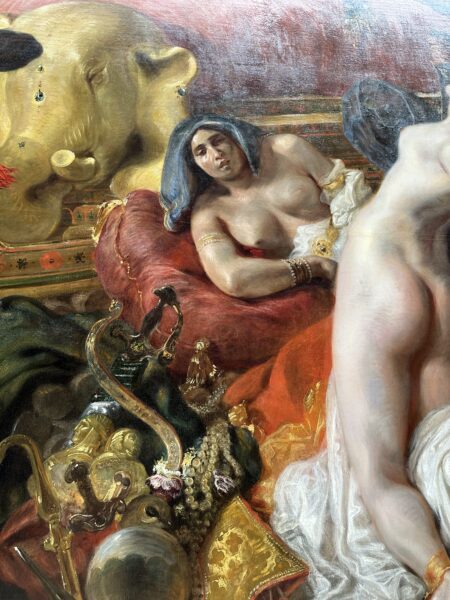
Eugène Delacroix(detail)
Lastly, the grandiose suicidal monarch presiding over the entire canvas is almost forgotten by the painter. Delacroix has used the pretext of a mythological story to depict an orgy that appears today in all its power, as was the case at the time of its creation. The focal point for the viewer is a voluptuous pair of buttocks belonging to a young woman whose back arches in suffering as a scimitar impales her.
Reference to Ruben’s nudes
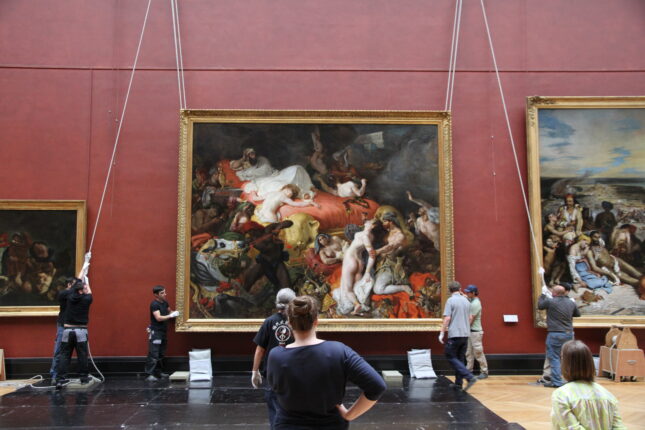
Eugene Delacroix
Here Delacroix seems to be making a reference to Rubens’s nudes, which were themselves heirs to the Renaissance Venetians. This organized chaos, this avalanche of bodies, was very poorly received when it was first displayed at the Salon, the place where France’s artistic triumphs were made and unmade.
Immoral subject
The subject matter was deemed to be immoral, and the work remained first for 15 years in the painter’s studio and then passed through various hands until it ended up in New York in the care of the great dealer best known for his promotion of the impressionists, Paul Durand-Ruel.
Paul Durand-Ruel
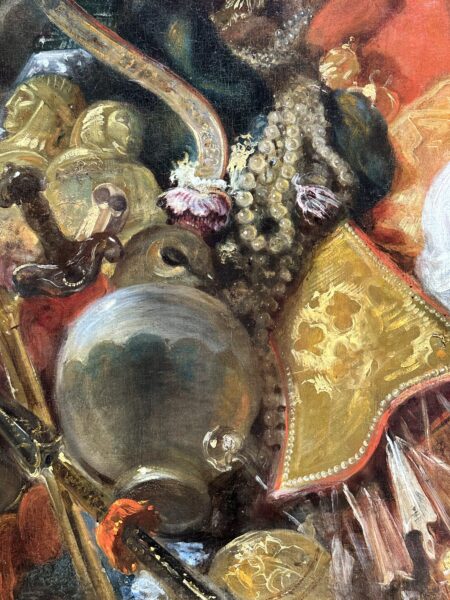
Eugène Delacroix( détail)
As it happens, he wanted to establish an international standing for Delacroix. The dealer made the purchase at Hôtel Drouot in 1873, to applause from the crowd, for a sum that was colossal for the time of 96,000 francs. This was a record price for the artist. It wasn’t until 1887 or 1888 before he was able to sell it on, for only 46,000 francs, to a Scottish collector by the name of James Duncan of Benmore. He himself organized a sale on 15 April 1889, again at Drouot, where the majestic painting sold for 34,000 francs.
19th century invented the actual art market
Until 1921, that is, when the gentlemen at the Louvre ended up accepting it. This time they paid 800,000 francs. Durand-Ruel was prepared to spend enormous sums to create an astonishing effect in order to drive up an artist’s value. Clearly this didn’t always work. But here we can see how the contemporary art market as we know it today was well and truly invented in the 19th century (1).
Restoring the big Delacroix
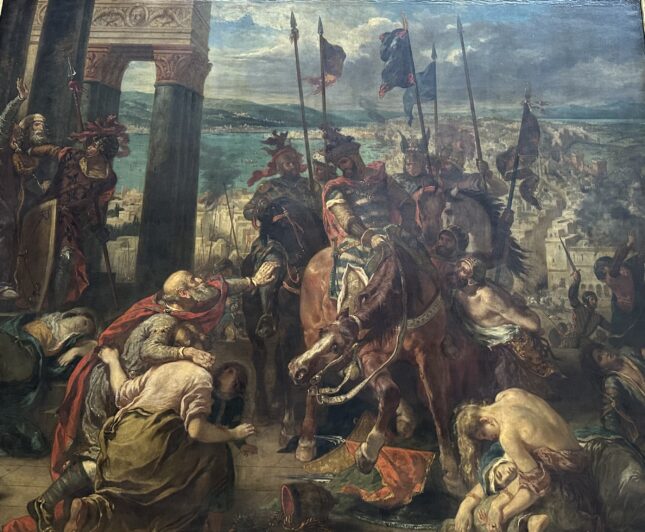
Eugène Delacroix
Returning to the Louvre, the resurrection of Sardanapale is part of a wider campaign of restoration targeting Delacroix, launched by Sébastien Allard, head of paintings at the Louvre. It was preceded by the hugely successful facelift of the legendary Orientalist painting “Les femmes d’Alger” by the same Eugène, which is spending a few months at the Centre Pompidou in the exhibition dedicated to Picasso and drawing.
La liberté guidant le peuple
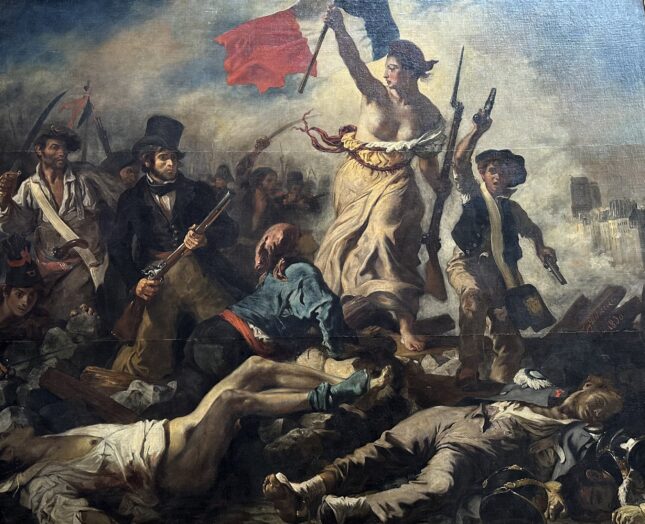
Eugène Delacroix
The master of Malaga was fascinated by this painting. It is now the turn of one of the most famous artworks at the Louvre after the Mona Lisa to be given a new makeover. “La Liberté guidant le peuple” (Liberty Leading the People) will be returning ahead of the Olympic Games in Paris in the summer of 2024, in the large red room next to “Sardanapale” and opposite the still very brown Géricaults, which could also do with their own touch up.
(1) I am dedicating a chapter to the subject in my book written in French, “Histoires extraordinaires de l’art à l’hôtel Drouot. De Vermeer à Picasso” Flammarion. October 2023.
Donating=Supporting

Support independent news on art.
Your contribution : Make a monthly commitment to support JB Reports or a one off contribution as and when you feel like it. Choose the option that suits you best.
Need to cancel a recurring donation? Please go here.
The donation is considered to be a subscription for a fee set by the donor and for a duration also set by the donor.



